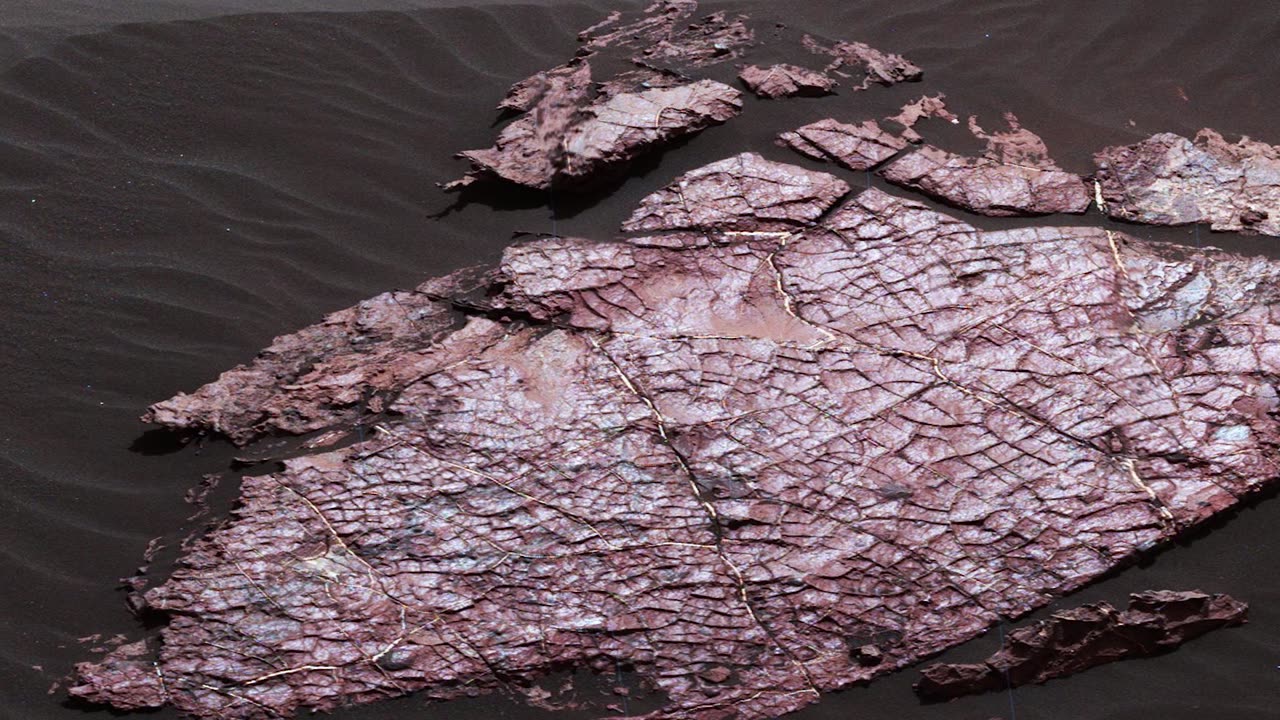Premium Only Content

Mars : A Guide to Gale Crater
August 02, 2017
The Curiosity rover has taught us a lot about the history of Mars and its potential to support life. Take a tour of its landing site, Gale Crater.
TRANSCRIPT
In 2012, NASA’s Curiosity Rover went to Mars to explore Gale Crater, a large impact basin with a massive, layered mountain in the middle. How did this strange landscape come to be? And what can its history teach us about the potential for life on Mars? After several years of exploration, here’s what we think could have happened.
Around 3.7 billion years ago, a large meteor impact blasts out the initial crater, cracking the rock below and leaving a central peak as the surface rebounds. It’s a wetter time in Mars’ history. Groundwater seeps into the new crater, while rivers fed by rain or melting snow also flow in, forming a large lake – and carrying in gravel, sand and silt.
This material keeps building up over millions of years. And as each layer cements into rock, it records a snapshot of the environment that shaped it. In time, the gradual drying of Mars shuts off the rivers. But sediment keeps piling up as sand and dust blow into the crater, deeply burying the deposits laid down in water.
Meanwhile, groundwater remains deep below the dusty surface. At some point, winds that once carried sediment in begin scouring it back out. In areas closer to the crater rim, these winds dig all the way down into the ancient lake deposits. And as the heavy weight above is lifted, these layers crack, which helps groundwater flow through and alter them again before they dry out.
By about 3 billion years ago, we’re left with the basic form we see today. It’s in this version of Gale Crater that Curiosity has helped piece together the story: Sediment patterns show a lot of water was present, continually, over many millions of years – both as persistent groundwater, and a long-standing lake (with occasional dry spells).
Mineral and chemical readings show that water from both the lake and subsurface was friendly for potential microbes. Drill samples from the lakebed show key elements, organic molecules, nutrients and energy sources that microbes could have used. Water flowing through underground fractures could have supported life even in deeply buried rocks. And the composition of some layers makes them good for preserving potential signs of past life.
Taken together, the evidence points to Gale Crater (and Mars in general) as a place where life — if it ever arose — might have survived for some time.
With our primary mission fulfilled, we continue exploring: uncovering the history of Mars, and learning more about how and where future missions can search for the signatures that ancient life may have left behind.
-
 55:42
55:42
Coin Stories with Natalie Brunell
1 day agoSaylor vs Wall Street – Why Bitcoin Wins
32.8K4 -
 45:26
45:26
The Why Files
3 days agoCONPLAN 8888: The Secret Plan to Survive the Zombie Apocalypse
31.7K31 -
 10:56
10:56
Liberty Hangout
2 days agoThank You Charlie
190K51 -
 1:49:51
1:49:51
Steve-O's Wild Ride! Podcast
8 days ago $8.36 earnedChet Hanks Found God On Chat GPT | Wild Ride #266
71.1K7 -
 2:18:15
2:18:15
Badlands Media
9 hours agoOnlyLands Ep. 25: Erica Kirk Steps Up, Antifa Fallout, and Global Sparks
88.9K31 -
 2:05:01
2:05:01
TimcastIRL
12 hours agoTrump Just Ended H1B Visas In Major Crackdown, Charging $100k Per Visa | Timcast IRL
305K198 -
 4:02:20
4:02:20
Nerdrotic
18 hours ago $31.61 earnedKimmel MELTDOWN | Hollywood Boycotts Disney | Friday Night Tights 372 with Kaida
139K22 -
 34:08
34:08
Bannons War Room
12 hours agoMEGYN KELLY: Jimmy Kimmel and Sore Cultural Losers, and Charlie Kirk's Spiritual Revival, w/ Bannon
105K94 -
 59:27
59:27
NAG Podcast
12 hours agoBrandon Straka: BOLDTALK with Angela Belcamino
93K13 -
 59:43
59:43
Sarah Westall
10 hours agoVietnam Shuts down 86 Million Bank Accounts, The Fourth Turning & more w/ Andy Schectman
70.6K18